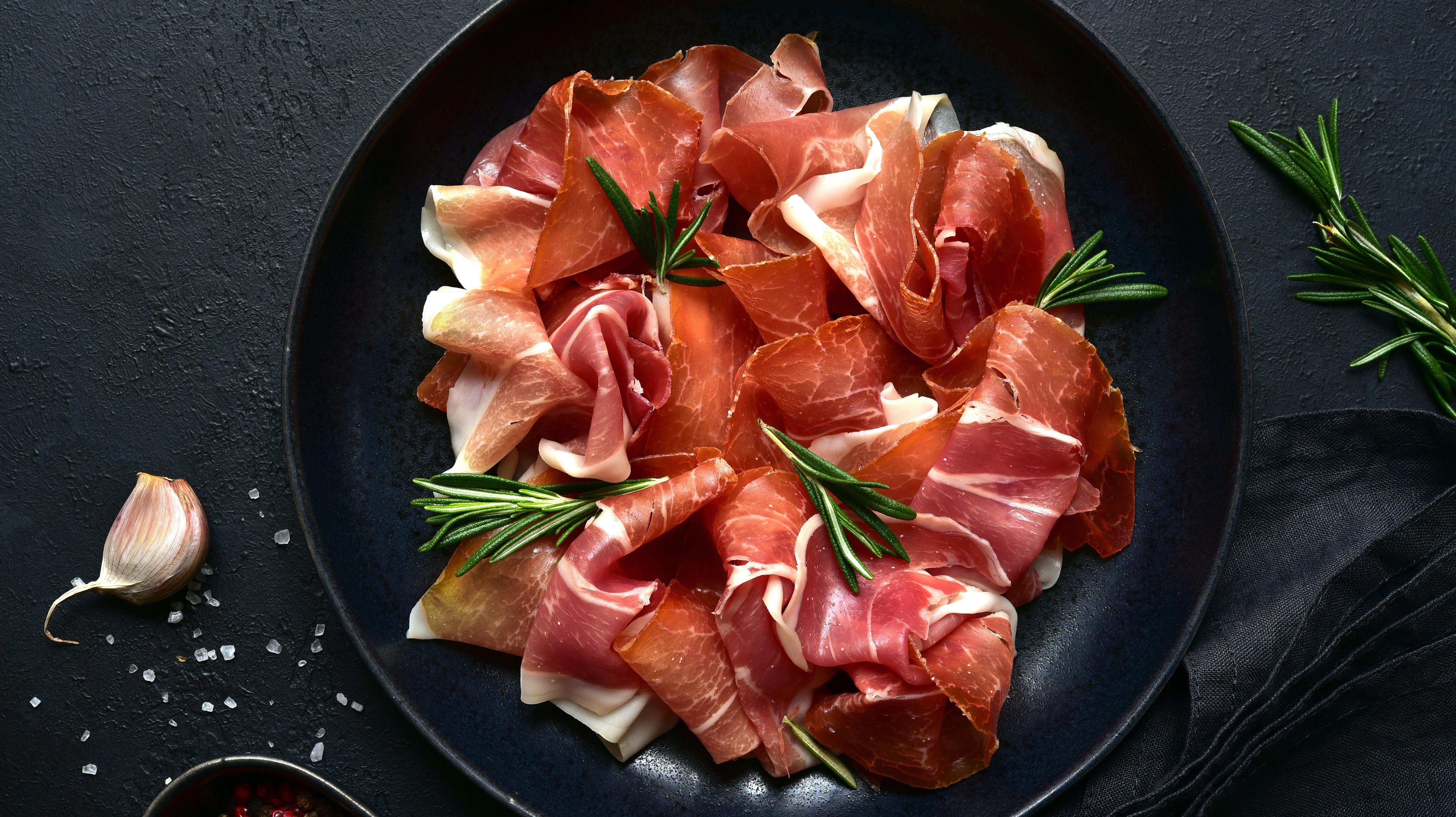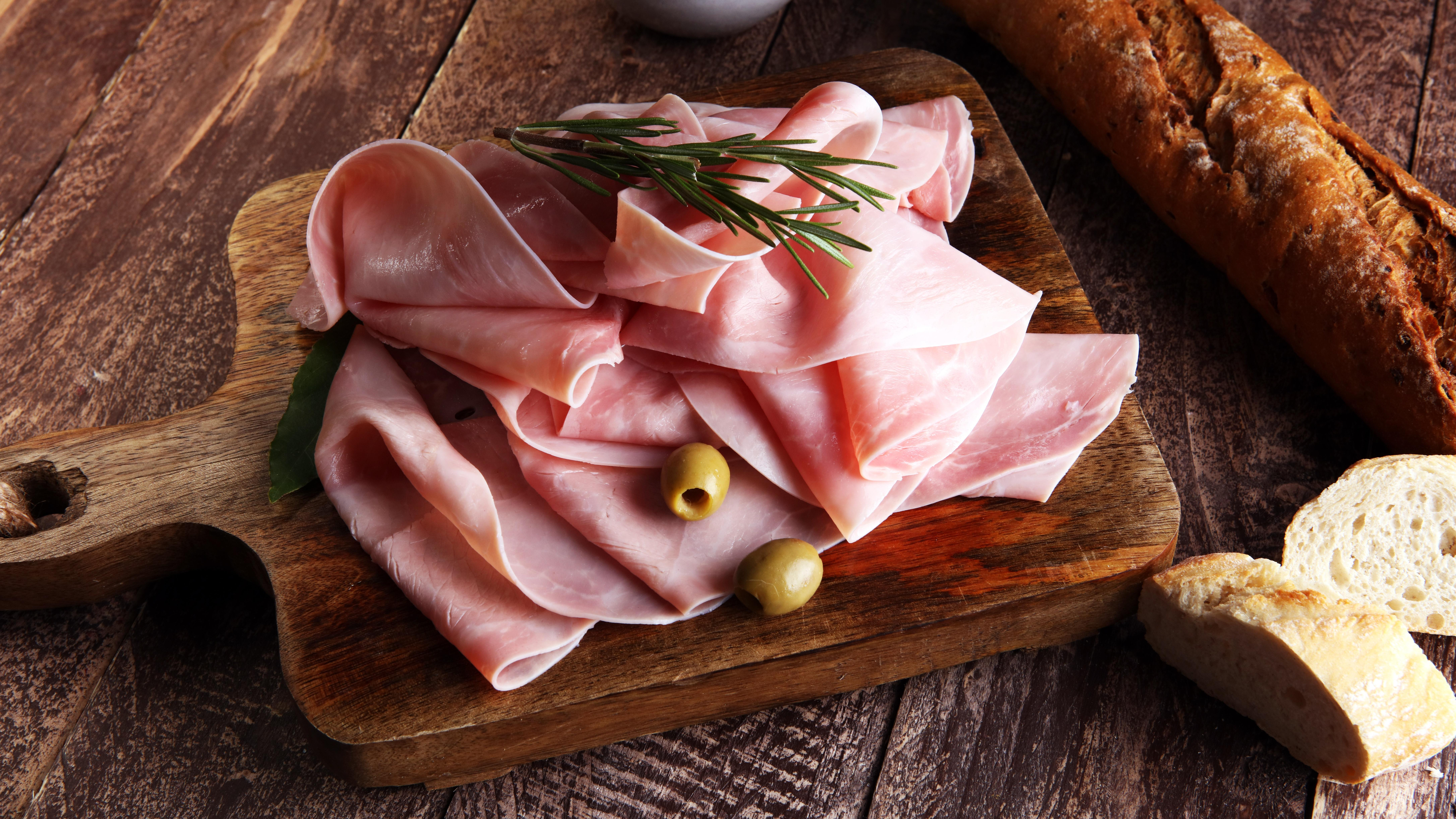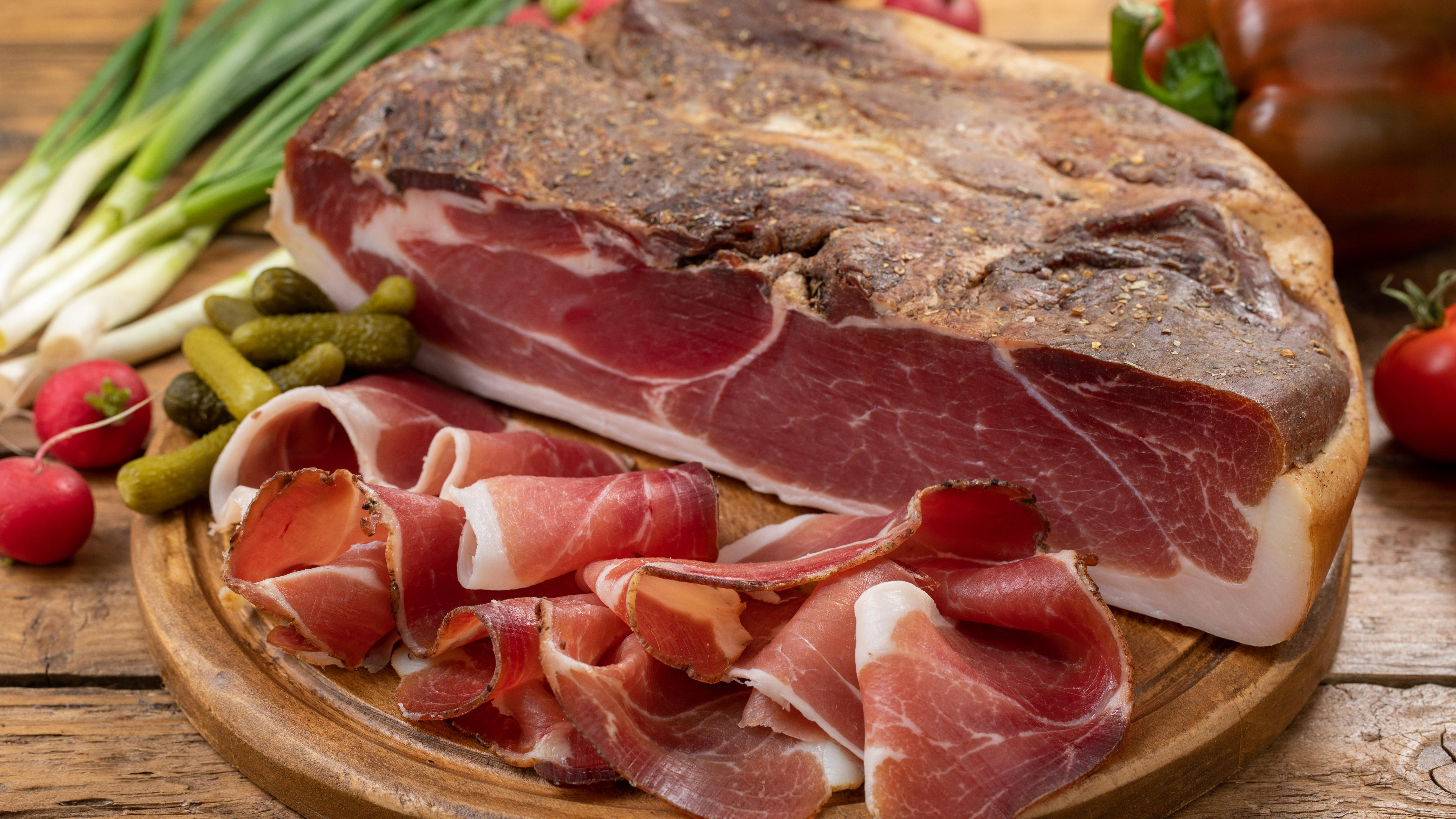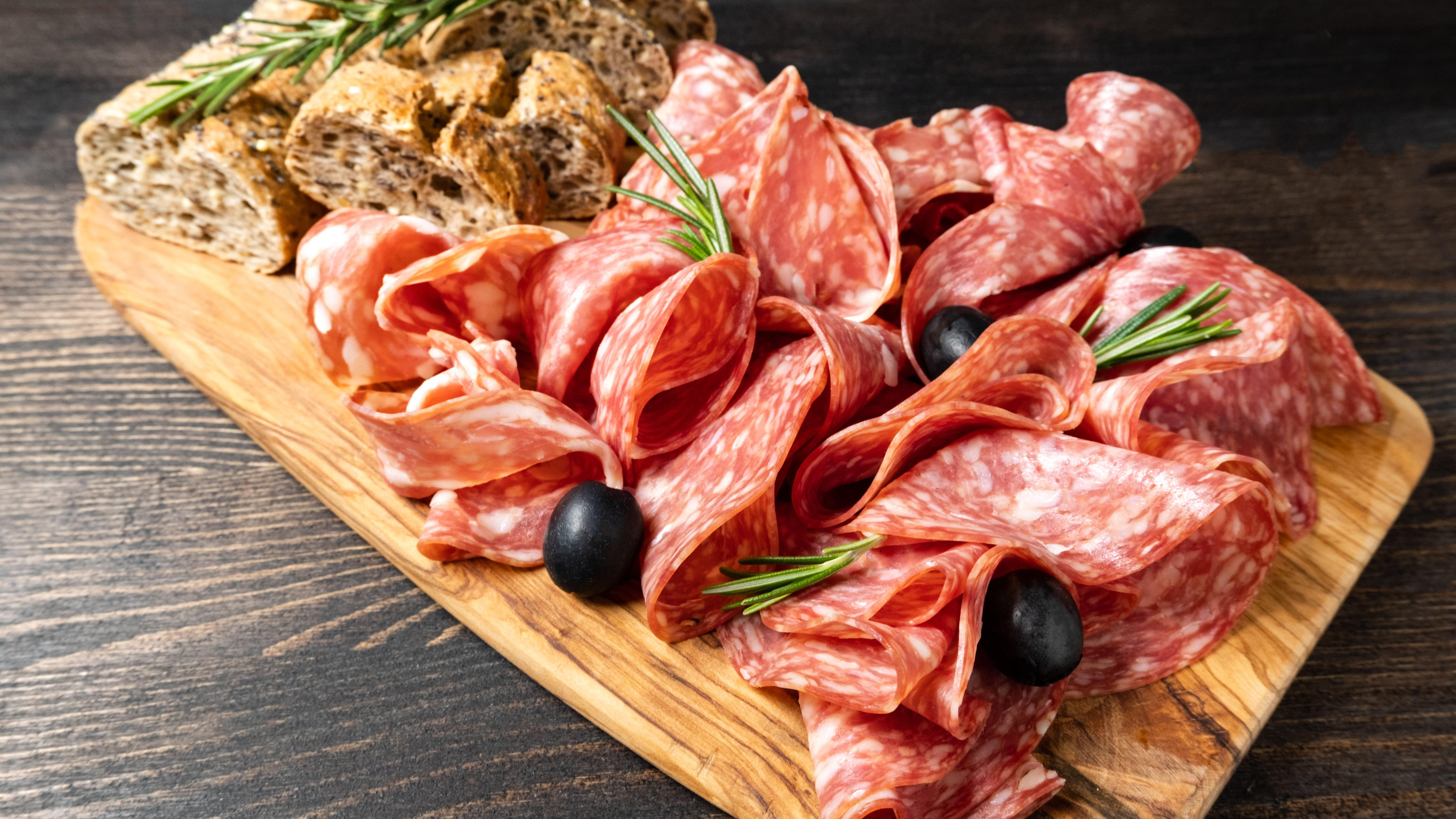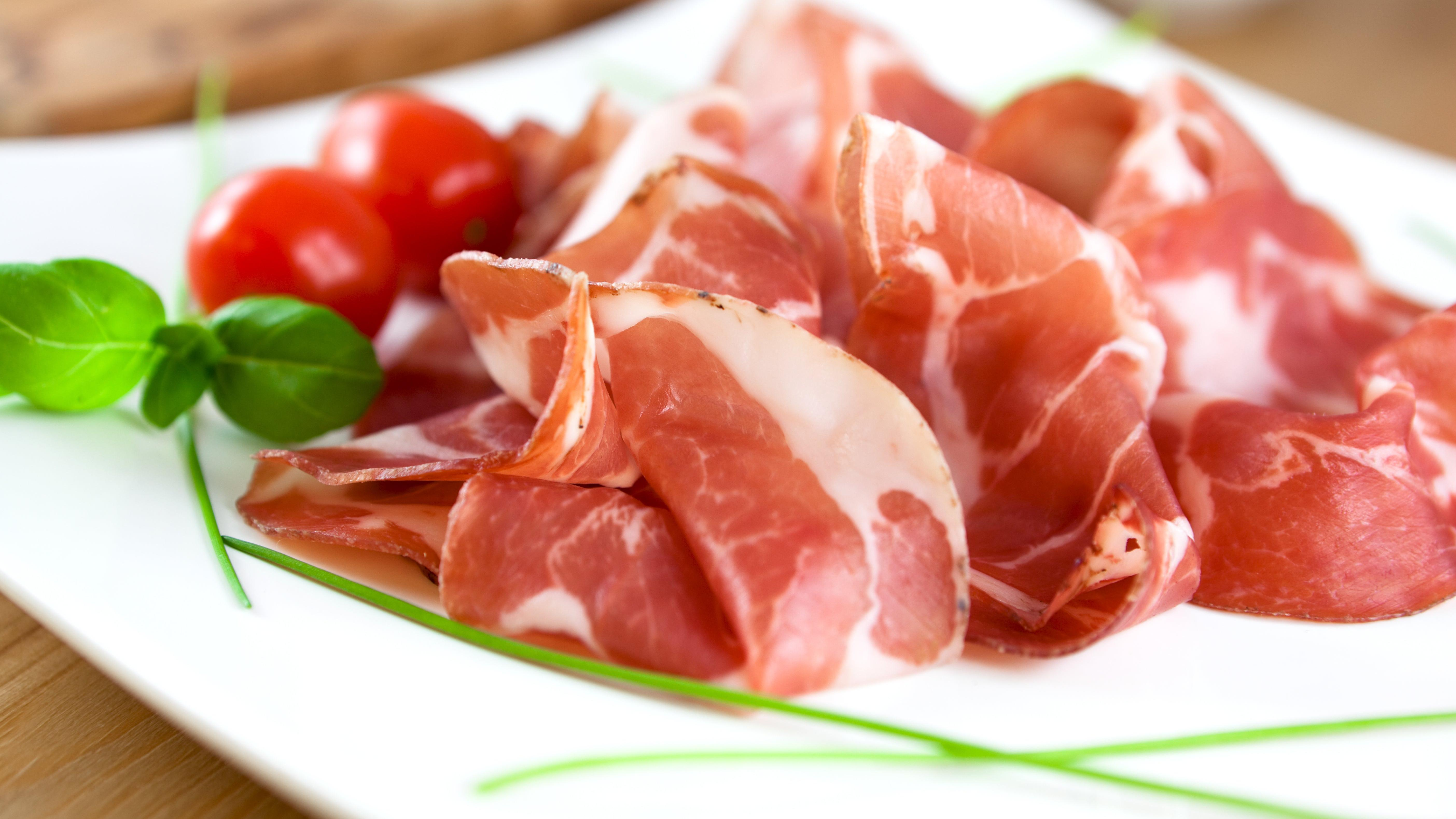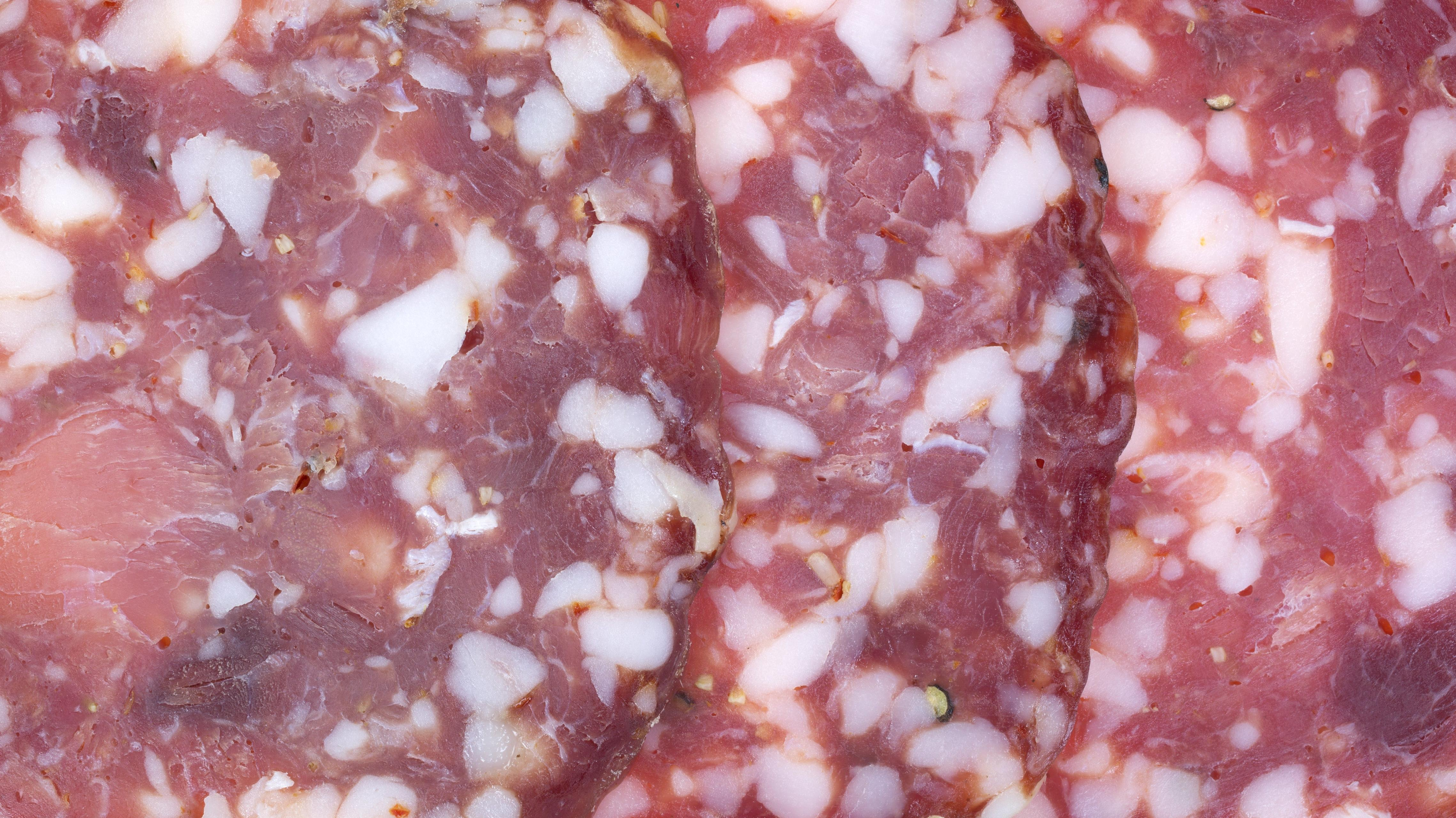8 Italian Sandwich Meats You Need On Your Next Sub
Your guide to the wide world of meats you'll encounter when you order an Italian.
There's no itch like the one we feel for an Italian hoagie, or submarine sandwich, or torpedo, or Italian cold cut sandwich, or whatever you like to call a tall pile of various cured meats where you're from. That first bite rewards you with a salty and tangy mouthful that sets the stage for the rest of the joyful eating experience. But the sandwich fillings themselves can come in any number of combinations, and within these endless iterations, it can be a little confusing to remember the difference between your mortadellas and your capicolas.
That's why we've compiled a guide to the most common Italian sandwich meats and their attributes, which'll come in handy next time you're perusing the Jersey Mike's menu or the one at your local deli.
Prosciutto crudo
Prosciutto crudo, more commonly known simply as prosciutto, is a thinly sliced, dry-cured ham, made from the hind leg or thigh. On sandwiches, it adds a salty, slightly funky flavor, and is just at home on a charcuterie plate as it is on a sandwich. In both presentations, you'll frequently find it paired with fresh mozzarella, as the mildness of the fresh cheese pairs well with the distinct flavor of the ham.
Prosciutto cotto
When you see the word "cotto" tacked on after the word prosciutto, that means you're getting something more akin to cooked ham than its air-cured counterpart ("cotto" means "cooked" in Italian). When prosciutto cotto is on your sandwich, expect a fully cooked pork product that's basically like deli ham, not the extra salty stuff we typically think of when we hear "prosciutto."
Speck
Speck is an interesting cured meat in that it's very similar to prosciutto crudo, but with one key difference: it's smoked. That smoke does a lot of work to impart flavor; while it might look like prosciutto, it sure doesn't taste like it. If you see speck on a deli sandwich, expect a subtle hit of smokiness to come through each bite with the same kind of structural delicacy you expect in a thinly shaved slice of prosciutto.
Salami
"Salami" is such a broad classification for a type of cured meat that its name doesn't quite distinguish it as the product deserves—but suffice to say, this belongs on your sandwich in some form. It consists of fermented and air-dried meat that is more dry than greasy; it's speckled with little bits of fat throughout, which is what gives it that delightful meltaway texture when you eat it. Salami can take on all sorts of popular forms, like hard salami, Genoa, and, of course, pepperoni.
Pepperoni
Just like bourbon is a variation of whiskey, pepperoni is a variant of salami. This American salami gets its red color from seasonings such as paprika or other dried red peppers, and has a punchy and tangy flavor that makes it ideal for Italian sandwiches. And oh yeah, pizza.
Capicola aka capicollo aka coppa
Capicola, also known as capicollo or coppa, is the Italian cured meat that you hear so often referred to as "gabagool." Once we're all done doing our best Tony Soprano impressions, we can plow down on this excellent cold cut that's made with whole-muscle neck meat, identifiable by its irregular marbling of fat. Like prosciutto crudo, this sliced meat is also often found on charcuterie platters.
Mortadella
Unlike all the other meats on this list, this Italian cold cut is created with emulsified meat. At least 15% of the volume of mortadella is made of cubed pieces of fat, hence the white specks throughout its cut surface, which melt as you bite into them, lending each slice a more silky texture than, say, bologna, which is an offshoot of mortadella but which in the United States is required to have no visible pieces of fat. Some mortadella is also blended with spices or pistachios, which remain visible in each slice.
Soppressata
Soppressata is yet another variety of salami. It can be identified by the irregular bits of fat distributed throughout. Soppressata can range from a red to purple color, and it has a bit of chew to it, along with a complex, funky, spiced flavor. Not only is it great on an Italian sandwich, it's also right at home on a pizza if you're looking for a (slightly fancy) alternative to pepperoni.

